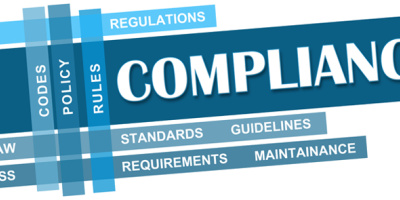IT departments have been so focused on meeting compliance mandates they may have missed the value that compliance solutions can add to the organization.
In his inauguration speech this week, incoming American President Barack Obama announced "A New Era of Responsibility." This theme has many parallels to compliance issues impacting IT today. The increased focus on IT audits in the last few years is largely a result of the Sarbanes-Oxley Act of 2002, which came into being following a number of highly visible business failures. While one might argue that the malfeasance was--or was not--a result of ethical failures on the IT side of the organization, IT certainly seems to have been caught up in the SOX dragnet. Whether IT had any culpability or not, it's certainly a huge part of the proposed solution. In this light, let's explore the state of IT compliance initiatives in companies today and examine where they might be headed tomorrow.
In the years since SOX legislation, IT audits have become more common and more rigorous. Numerous industry-specific initiatives--such as healthcare's HIPAA, FDA requirements (21 CFR Part 11), and Payment Card Industry (PCI) security standards--as well as other countries' legislation following in the footsteps of the United States' SOX Act have contributed to an increased focus on compliance. The resulting internal and external audits, and their effects, are visible throughout the entire organization. In response, IT audit compliance has become something of a growth business for many IT services companies. This change in IT landscape results in a number of interesting consequences.
From our perspective, overall consistency in IT audits is sorely lacking. We're six years into the SOX Act, yet the criteria applied during audits still vary widely among companies. While various guidelines and organizations exist to drive improved IT process and audit compliance, nothing has led to an industry standard similar to what exists on the accounting side. For IT, audit standardization remains beyond our immediate horizon.
IT auditors are more empowered and emboldened than ever before. IT audit teams have gone from being nonexistent, or holding distinctly secondary roles, to front-and-center power players. They now carry sway at a much bigger table. Companies that once implemented audit suggestions when time allowed now are measured against specific published internal procedures. They are required to show progress toward these objectives by the next audit. Many of the corrective actions must be implemented immediately. Evidence of non-compliance has a much higher visibility in an organization today, and continued non-compliance is no longer acceptable. There is also little room for negotiation of audit criteria as there was in the past.
The technical competence of auditors is increasing, so the deeper dive into technology is occurring more frequently. Specific to IBM i environments, auditors are digging deeper into system security matters. Object-level authorities, use of program adoption, system values, nuances beyond just who has *ALLOBJ rights or how many people know the password to QSECOFR are being carefully examined. Increasingly sophisticated tools are available and are being used to help with this analysis (and to maintain good security practices on an ongoing basis).
On the process side, at one time, simply having a change management and deployment tool in place was sufficient. Nowadays, the characteristics and implementation details of these tools are examined in detail. More elements of the lifecycle in a software change are coming under scrutiny. Who approved the change? Who tested the change? Who deployed the change? Provable audit trails are typically required for these and other specific events and activities.
On the positive side, a number of companies are now starting to recognize compliance initiatives as more than simply an additional cost in a period of shrinking budgets or a demand to do more with less. Granted, there are many companies that still implement systems and procedures with the main focus on simply being compliant, passing audits, and dealing with this year's required corrective actions. These organizations tend to implement manual or paper-based systems with minimal automation or centralized data. They are looking simply to minimize short-term costs.
Other companies have used audits as an opportunity to implement broader IT improvements that also happen to meet their compliance objectives. While compliance remains the driving force behind these initiatives and usually is what provides funding and priority status for these projects, it is not the only objective. While it is true that compliance objectives oftentimes can be met by invasive, manual, paper-based processes that provide little additional value, some companies are asking why they can't also add value for their cost. It may not be a surprise that systems that can track compliance data also can be tasked for many other purposes.
Benefits can include visibility to your end-user communities on the status of various IT projects. Approvals to requests can now come back in the form of email notifications with links to automated systems that explain proposed changes and offer feedback from affected parties. Dashboards can be set up on top of this data to keep the user community apprised of project status and priorities.
Forward-thinking companies are beginning to think of these systems as an ERP solution for IT that helps keep the department moving while providing the controls and audit trails demanded by the auditor. A variety of commercial solutions are available that can be implemented to automate a company's specific needs and compliance objectives.
We all know that IT organizations are being held ever more accountable today than in years past. Management wants to know where the money is being spent, what the return from one project versus another is. One company with whom we do business reported that one of the side benefits of implementing compliance via IT workflow solutions is that IT staff can "now walk to the lunch room and look the end users in the eye." It turned out the systems the company implemented for SOX had many side benefits that resulted in changing the perception of IT from one of being a "black hole" to one that provided end users with project visibility and priorities of what is acknowledged most important to them. The information collected and tracked for IT compliance can be used to keep the rest of the organization informed about and engaged in what is happening within IT.
What does the future hold for IT compliance?
In light of the latest round of recent financial turmoil, the elephant in the room is, "What new government initiatives impacting IT may be coming our way in this new era of responsibility?" Is SOX II (or 2.0) on the horizon? Without delving into the specifics of recent events, it seems that since 2002, most publicly traded companies, and many privately held companies as well, have made significant improvements in their IT processes so they can achieve whatever standards may be applied to their businesses from auditors. Misguided IT practices are not at the core of recent events and therefore additional government regulation, specific to IT organizations, seems unnecessary and likely is not forthcoming at this time.
Independent of recent financial events, it does seem, however, that the bar for compliance will continue to be raised each year. What passed an audit last year may not be good enough next year. Finally, businesses and IT departments have a choice in how to approach IT compliance. Do we simply swallow it as an increased cost of doing business or treat it as an opportunity to improve our overall IT organization? Whether we like it or not, increased scrutiny of IT is here to stay. Wouldn't we be better served as an industry to use the effort and money expended in audit compliance to also deliver better service and improved transparency to the end users in our organizations?






















 More than ever, there is a demand for IT to deliver innovation. Your IBM i has been an essential part of your business operations for years. However, your organization may struggle to maintain the current system and implement new projects. The thousands of customers we've worked with and surveyed state that expectations regarding the digital footprint and vision of the company are not aligned with the current IT environment.
More than ever, there is a demand for IT to deliver innovation. Your IBM i has been an essential part of your business operations for years. However, your organization may struggle to maintain the current system and implement new projects. The thousands of customers we've worked with and surveyed state that expectations regarding the digital footprint and vision of the company are not aligned with the current IT environment. TRY the one package that solves all your document design and printing challenges on all your platforms. Produce bar code labels, electronic forms, ad hoc reports, and RFID tags – without programming! MarkMagic is the only document design and print solution that combines report writing, WYSIWYG label and forms design, and conditional printing in one integrated product. Make sure your data survives when catastrophe hits. Request your trial now! Request Now.
TRY the one package that solves all your document design and printing challenges on all your platforms. Produce bar code labels, electronic forms, ad hoc reports, and RFID tags – without programming! MarkMagic is the only document design and print solution that combines report writing, WYSIWYG label and forms design, and conditional printing in one integrated product. Make sure your data survives when catastrophe hits. Request your trial now! Request Now. Forms of ransomware has been around for over 30 years, and with more and more organizations suffering attacks each year, it continues to endure. What has made ransomware such a durable threat and what is the best way to combat it? In order to prevent ransomware, organizations must first understand how it works.
Forms of ransomware has been around for over 30 years, and with more and more organizations suffering attacks each year, it continues to endure. What has made ransomware such a durable threat and what is the best way to combat it? In order to prevent ransomware, organizations must first understand how it works. Disaster protection is vital to every business. Yet, it often consists of patched together procedures that are prone to error. From automatic backups to data encryption to media management, Robot automates the routine (yet often complex) tasks of iSeries backup and recovery, saving you time and money and making the process safer and more reliable. Automate your backups with the Robot Backup and Recovery Solution. Key features include:
Disaster protection is vital to every business. Yet, it often consists of patched together procedures that are prone to error. From automatic backups to data encryption to media management, Robot automates the routine (yet often complex) tasks of iSeries backup and recovery, saving you time and money and making the process safer and more reliable. Automate your backups with the Robot Backup and Recovery Solution. Key features include: Business users want new applications now. Market and regulatory pressures require faster application updates and delivery into production. Your IBM i developers may be approaching retirement, and you see no sure way to fill their positions with experienced developers. In addition, you may be caught between maintaining your existing applications and the uncertainty of moving to something new.
Business users want new applications now. Market and regulatory pressures require faster application updates and delivery into production. Your IBM i developers may be approaching retirement, and you see no sure way to fill their positions with experienced developers. In addition, you may be caught between maintaining your existing applications and the uncertainty of moving to something new. IT managers hoping to find new IBM i talent are discovering that the pool of experienced RPG programmers and operators or administrators with intimate knowledge of the operating system and the applications that run on it is small. This begs the question: How will you manage the platform that supports such a big part of your business? This guide offers strategies and software suggestions to help you plan IT staffing and resources and smooth the transition after your AS/400 talent retires. Read on to learn:
IT managers hoping to find new IBM i talent are discovering that the pool of experienced RPG programmers and operators or administrators with intimate knowledge of the operating system and the applications that run on it is small. This begs the question: How will you manage the platform that supports such a big part of your business? This guide offers strategies and software suggestions to help you plan IT staffing and resources and smooth the transition after your AS/400 talent retires. Read on to learn:
LATEST COMMENTS
MC Press Online